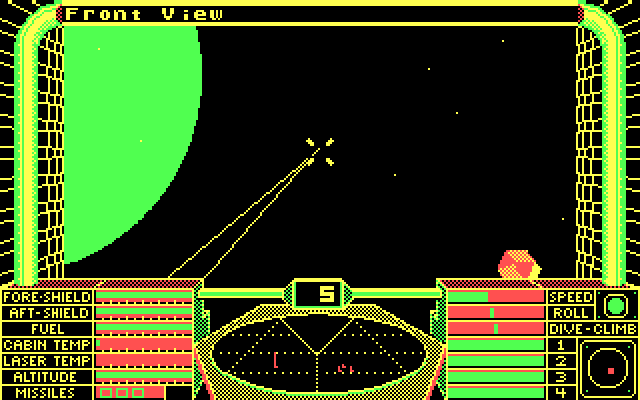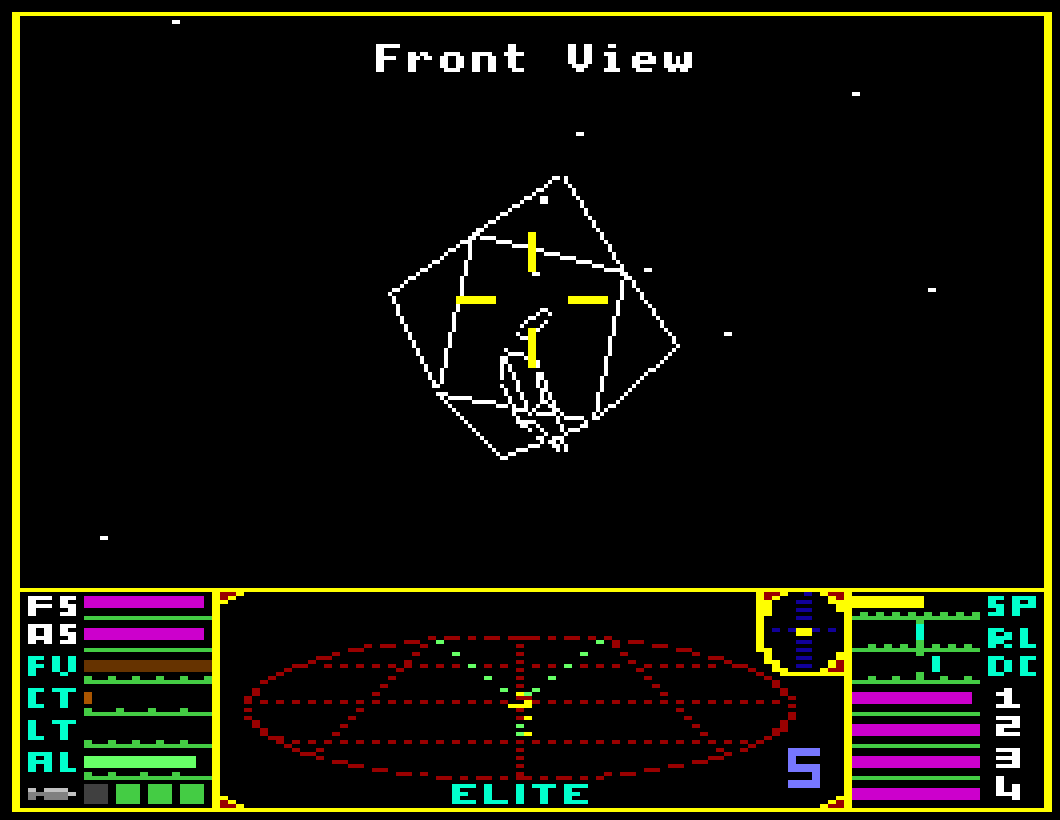First post, by Rekrul
I spent a lot of hours playing Elite on the C64. Despite the slowdown whenever you got too close to a ship or explosion, it was a very playable game. I also played it quite a bit on the Amiga, which was faster and smoother, but seemed to be lacking the 'soul' that the 8-bit versions had. Still, it was very playable and I had many enjoyable dogfights.
I recently decided to try the DOS versions of Elite in DOSBox.
The original Elite only runs in CGA and while it's mostly playable, it seems at times that the enemy ships dart around way too fast. They also come fast and furious. You start at Lave, which should be a relatively safe world with few pirates, but fly outside of the safe zone and you'll be attacked within 30 seconds. Unfortunately, the radar gives no indication of which ships are attacking you. This is a major drawback considering that at any given point in time you probably have at least four ships in the area, only a couple of which are actually attacking you. Shooting the wrong ones can affect your legal status, or at the very least make enemies out of previously harmless ships, compounding your problems.
I figured Elite Plus had to be better, but it's actually worse. At the default DOSBox speed, it's like you're watching the game in fast-forward mode. It's completely unplayable. Lowering the cycles in DOSBox makes the game choppy rather than slow. After using a slowdown command to slow DOSBox down to about 8Mhz or so, the game became mostly playable, but had the exact same problems as the original DOS Elite. Leave Lave's safe zone and get attacked with a few seconds. More ships keep appearing and there's no indication on the radar of which ones are hostile. Then I flew toward the planet until it completely filled the view and the low altitude alarm started going off, but the safe zone indicator never re-appeared. Then I got attacked by more ships and got blown up in about 20 seconds.
I thought maybe I was just out of practice, so I downloaded a copy of Elite: the New Kind and tried it. This is a Windows port of the original BBC Micro version of Elite. It plays fast and smooth and has none of the problems of the DOS versions. I jumped straight to an anarchy system and survived several dogfights with pirate ships. The controls are fine, if a little 'slippery' and attacking ships are marked in yellow on the radar. I only ended up dying because of hand-cramp and the fact that it seemed impossible to actually reach the planet, since the jump drive is mass-locked 99% of the time even though there's nothing on the radar.
So is it just me, or did they drop the ball on the DOS ports of Elite?

